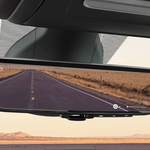The automobile manufacturer known for it’s RAM, Jeep and Dodge will spend $30 billion through 2025 to develop electric vehicles.
While other major vehicle manufacturers have touted their electric vehicle (EV) initiatives, Stellantis had remained relatively quiet about electrification.
Other than the Jeep Wrangler 4xe hybrid, the company seemed content to stand by with just a toe in the EV waters, while competitors jumped in with both feet.
That all changed during the company’s EV Day 2021. In a short video, Stellantis CEO Carlos Tavares announced a new initiative to invest in EV technology and produce affordable consumer vehicles for both the U.S. and European markets.
While other automobile manufacturers have focused publicity on new technologies, production facilities and future models, Stellantis took a unique bent towards fleet electrification that might explain the company’s slow and steady approach to EV developement— profitability.
The company intends to invest $30 billion in shoring up its EV manufacturing capabilities. But that investment has been targeted to spend in ways the will make EV production profitable. Every company invests in research and development with hopes of producing advancements that lead to new or more profitable products.
With EV, companies like GM and Ford have fully committed large amounts of resources to developing and now producing EV vehicles. Unlike those competitors, Stellantis has delineated a plan how EV will be a profitable segment of the company’s portfolio.
Executives appear to be targeting affordability as a key differentiator. The company has set a goal that by the year 2026, the total cost of ownership of EVs will be equivalent to that of internal combustion engine vehicles.
Technologically, the company seems to be inline with the rest of the industry, promising vehicles with a battery range of 300 to 500 miles on a full charge, and a charging rate of 20 miles per minute.
Stellantis has developed four BEV-centric platforms, to serve as the backbone of their electrified vehicle offers. The platforms are designed with a high level of flexibility (length and width) and component sharing, delivering economies of scale as each platform can support production of up to 2 million units per year.
The four platforms are:
- STLA Small, with a range up to 300 miles (500 kilometers)
- STLA Medium, with a range up to 440 miles (700 kilometers)
- STLA Large, with a range up to 500 miles (800 kilometers)
- STLA Frame, with a range up to 500 miles (800 kilometers)
Propulsion includes a family of three electric drive modules (EDM) that combine the motor, gearbox and inverter. The EDMs can be configured for front-drive, rear-drive, all-wheel drive and 4xe.
Battery packs will be tailored for a variety of vehicles – from smaller city cars to energy-dense packs for performance vehicles and trucks. Use of two battery chemistries is planned by 2024 to support various customer needs: a high energy-density option and a nickel cobalt-free alternative. By 2026, the first competitive solid state battery technology is targeted to be introduced.
The event included one other big announcement, the soon to be produced Grand Cherokee 4xe— a hybrid version of the company’s most popular SUV brand.
The Grand Cherokee 4xe will debut at the 2021 New York International Auto Show.
![banner right]()
![banner right]()












